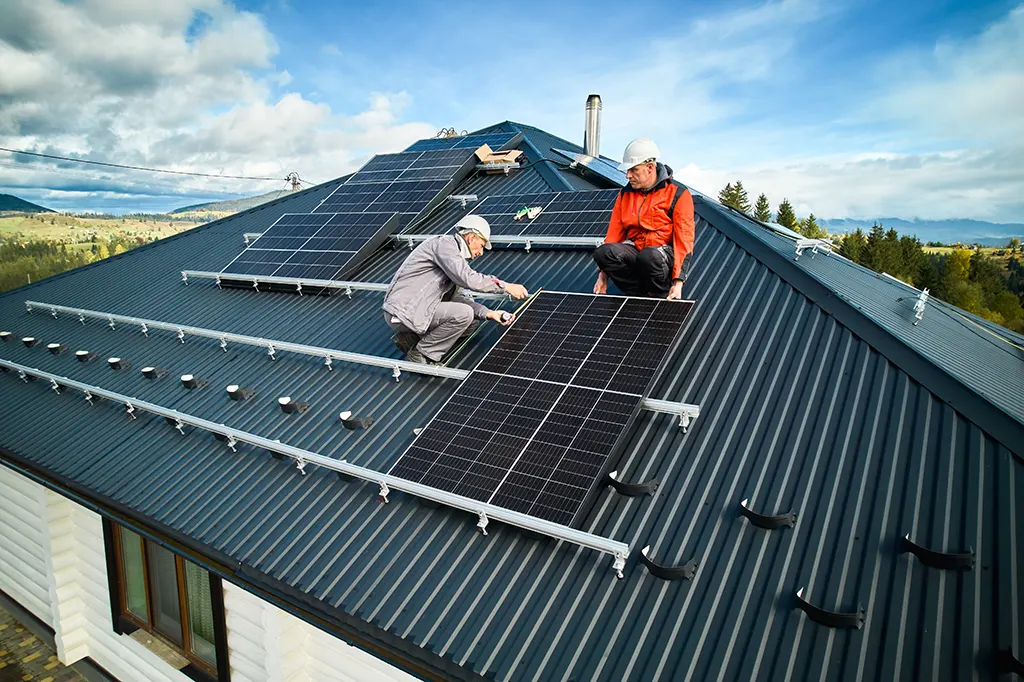What is Smart Financial Living? Smart financial living helps you save, invest, and spend wisely. Learn the secrets of financial health and live your best life without breaking the bank! Ever wondered, “What is smart financial living?” You’re not alone! In today’s fast-paced world, where money can easily slip through your fingers, mastering the art of smart financial living is a total game changer. It’s not just about saving money but making the best decisions for your financial health without having to live like a monk. We’re talking balance — spending, saving, and investing wisely while still enjoying life to the fullest. In this guide, we’re diving deep into everything you need to know to start living your best financial life. From simple budgeting tricks to investment strategies that even your grandma would approve of, we’ve got you covered. So, let’s break it down and see how you can be smarter with your money starting today! What is Smart Financial Living? Smart financial living is all about making mindful choices with your money. It means creating a lifestyle where you’re in control of your finances instead of your finances controlling you. This concept focuses on the idea of living within your means while planning for future financial stability. Smart financial living isn’t about pinching pennies to the point where you don’t have any fun. It’s more about being intentional with your spending, saving, and investing. It’s about making sure every dollar has a purpose, whether it’s paying off debt, boosting your savings account, or treating yourself to that much-needed vacation. By adopting smart financial living habits, you can avoid the common traps of living paycheck to paycheck or getting buried in debt. With the right approach, you can start building wealth, feel more secure about your future, and still enjoy the present moment. Why Does Smart Financial Living Matter? So, why should you care about smart financial living? Well, let’s be real. We all want financial freedom, right? But the road to get there isn’t always smooth. By embracing smart financial habits, you’re giving yourself a safety net that ensures you’re not stressed out every time an unexpected bill pops up. When you live smartly with your finances, you’re also setting yourself up for future goals — whether that’s buying a home, starting a family, or retiring early. It’s about making sure that every financial decision you make today is aligned with where you want to be tomorrow. Plus, let’s face it: being in control of your money just feels good. No more panic attacks when you check your bank account! Instead, you’ll know exactly where your money is going and how much you’ve got saved for that rainy day fund (or spontaneous road trip). How to Start Smart Financial Living Ready to start living the smart financial life? Here are the key steps to get going: 1. Create a Budget That Works for You Creating a budget doesn’t mean depriving yourself. It’s about understanding where your money is going so you can make adjustments to prioritize your financial goals. Start by tracking your income and expenses to see if you’re spending more than you earn. Once you have an idea of where your money is going, create categories for essentials (rent, utilities, groceries), savings, and fun stuff (like eating out or hobbies). Pro tip: Stick to the 50/30/20 rule — 50% of your income goes to needs, 30% to wants, and 20% to savings and debt repayments. 2. Start Saving Regularly You’ve probably heard it a million times, but saving really is the backbone of smart financial living. Start small if you need to, but make sure to set up automatic transfers to your savings account every month. The goal is to have at least three to six months of living expenses saved for emergencies. Hot tip: If you struggle to save, try apps that round up your purchases and deposit the difference into a savings account. You’ll be surprised how fast it adds up! 3. Pay Off High-Interest Debt First Debt is a financial killer, especially when it comes with sky-high interest rates. Start by paying off debts with the highest interest rates first, like credit cards or payday loans. This strategy, called the “avalanche method,” will save you tons of money in interest over time. Investing as a Part of Smart Financial Living Once you’ve got your budget and savings in check, it’s time to think about growing your wealth. Smart financial living isn’t just about saving money — it’s also about making your money work for you. 1. Get Started with Simple Investments Investing might sound intimidating, but it’s one of the best ways to build wealth over time. Start simple with a diversified portfolio that includes stocks, bonds, and ETFs (exchange-traded funds). Don’t worry if you’re a total newbie; there are plenty of beginner-friendly investment platforms that offer robo-advisors to help manage your investments. 2. Understand Risk and Reward Every investment comes with a certain level of risk. It’s important to understand how much risk you’re willing to take on in exchange for potential rewards. A good rule of thumb is the younger you are, the more risk you can afford to take since you have more time to recover from any losses. Smart Financial Living for Millennials and Gen Z If you’re a millennial or part of Gen Z, you’ve probably grown up hearing about the importance of financial literacy. But with rising living costs, student loans, and an unpredictable job market, managing your money can feel overwhelming. 1. Embrace Technology for Money Management We live in the age of technology, so why not use it to our advantage? There are countless apps designed to help you budget, save, and invest with ease. From budgeting apps like Mint to investment platforms like Robinhood, tech can be a game-changer for your financial habits. 2. Side Hustles Are Your Best Friend Gone are the days when you could rely on a single income stream. If
How to Set Up a Smart Home Security System: A Complete Guide
Learn how to set up a smart home security system step-by-step. Protect your home with cutting-edge technology and gain peace of mind today. In today’s world, ensuring the safety of our homes and loved ones is paramount. With advancements in technology, setting up a smart home security system has become an increasingly popular and effective way to protect our properties. This comprehensive guide will walk you through the process of how to set up a smart home security system, from choosing the right components to installation and optimization. By the end of this article, you’ll have all the knowledge you need to create a secure, interconnected home that provides peace of mind and cutting-edge protection. Understanding Smart Home Security Systems Before diving into the setup process, it’s essential to understand what a smart home security system entails. A smart home security system is a network of interconnected devices that work together to monitor and protect your home. These systems typically include a combination of sensors, cameras, alarms, and smart devices that can be controlled and monitored remotely through a smartphone app or web interface. When learning how to set up a smart home security system, it’s crucial to recognize the benefits these systems offer over traditional security setups. Smart systems provide real-time alerts, remote monitoring, and integration with other smart home devices, creating a comprehensive and responsive security solution. Key Components of a Smart Home Security System To effectively set up a smart home security system, you need to be familiar with its core components. These typically include: 1. Control Panel or Hub: The central brain of your system 2. Door and Window Sensors: Detect unauthorized entry 3. Motion Detectors: Identify movement within your home 4. Security Cameras: Provide visual monitoring and recording 5. Smart Doorbell: Allows you to see and communicate with visitors 6. Smart Locks: Enable keyless entry and remote locking/unlocking 7. Environmental Sensors: Detect smoke, carbon monoxide, or water leaks 8. Sirens or Alarms: Alert you and deter intruders 9. Smart Lights: Can be programmed to deter burglars Understanding these components is crucial when learning how to set up a smart home security system, as it will help you choose the right devices for your specific needs. Assessing Your Home Security Needs Before you begin the process of how to set up a smart home security system, it’s essential to assess your specific security needs. Every home is unique, and what works for one property may not be suitable for another. Take the time to evaluate your home’s layout, potential vulnerabilities, and your personal security concerns. Start by conducting a thorough walkthrough of your property, both inside and outside. Look for potential entry points that an intruder might target, such as ground-floor windows, sliding glass doors, or poorly lit areas around your home. Consider the following factors: – Size of your home – Number of entry points – Outdoor areas that need monitoring – Valuable items or areas that require extra protection – Presence of pets or children – Your neighborhood’s crime rate By carefully assessing these factors, you’ll be better equipped to choose the right components and design an effective system when learning how to set up a smart home security system. Creating a Security Plan Once you’ve assessed your needs, the next step in learning how to set up a smart home security system is to create a comprehensive security plan. This plan should outline: 1. Priority areas for protection 2. Types of sensors and devices needed 3. Camera placement for optimal coverage 4. Integration with existing smart home devices 5. Budget considerations 6. Monitoring preferences (self-monitoring vs. professional monitoring) Having a well-thought-out plan will streamline the setup process and ensure that you don’t overlook any critical aspects of your home’s security. Choosing the Right Smart Home Security System With a clear understanding of your needs and a solid plan in place, it’s time to choose the right smart home security system. This decision is crucial in the process of how to set up a smart home security system, as it will determine the effectiveness and ease of use of your entire setup. When selecting a system, consider the following factors: 1. Compatibility with other smart home devices 2. Ease of installation and use 3. Expandability for future upgrades 4. Quality and reliability of components 5. Customer support and warranty options 6. Cost of equipment and ongoing monitoring fees There are several reputable brands in the market, each offering unique features and benefits. Some popular options include: – Ring Alarm – SimpliSafe – Nest Secure – ADT Pulse – Abode Research each option thoroughly, read customer reviews, and compare features to find the system that best fits your needs and budget. DIY vs. Professional Installation As you learn how to set up a smart home security system, you’ll need to decide between a do-it-yourself (DIY) installation or professional installation. Both options have their pros and cons: DIY Installation: – Pros: Lower cost, flexibility in timing, sense of accomplishment – Cons: Requires technical know-how, potential for mistakes, time-consuming Professional Installation: – Pros: Expert setup, guaranteed proper functioning, time-saving – Cons: Higher cost, reliance on technician’s schedule Consider your technical skills, available time, and budget when making this decision. Many modern smart home security systems are designed for easy DIY installation, but if you’re not confident in your abilities, professional installation might be the better choice. How to Set Up a Smart Home Security System Now that you’ve chosen your system, it’s time to dive into the actual setup process. This step-by-step guide will walk you through how to set up a smart home security system, ensuring that you cover all the essential aspects of installation and configuration. Step 1: Unbox and Inventory Your Components Begin by unpacking all the components of your smart home security system. Take inventory to ensure you have all the necessary parts, including: – Control panel or hub – Sensors – Cameras – Mounting hardware – Power adapters – User manuals
Renewable Energy in Agriculture: Powering Sustainable Practices
Discover how renewable energy in agriculture is revolutionizing farming practices. Learn about sustainable solutions that boost efficiency and reduce costs for farmers.
Types of Sustainable Energy: A Comprehensive Overview
Discover the various types of sustainable energy revolutionizing our world. We explore solar, wind, hydropower, and more to help you understand clean energy options.
Green Energy for Carbon Neutral Ecosystem: A Sustainable Future
Discover how green energy for carbon neutral ecosystem can revolutionize our future. We explore sustainable solutions to combat climate change and create a cleaner world.
Renewable Energy Management: Strategies for Efficiency
Discover effective strategies for renewable energy management to optimize efficiency and sustainability in your operations. Learn how we can help you maximize clean energy resources.
Cheapest Renewable Energy for the Home: Cost-Effective Solutions
Discover the most affordable renewable energy options for your home. We explore cost-effective solutions to help you save money and reduce your carbon footprint.
Alternative Electricity Sources: Exploring Your Options
Discover sustainable alternative electricity sources for a greener future. We explore renewable options to power your home and reduce environmental impact.
Green Energy Solar Panels: Harnessing the Sun’s Power
Discover how green energy solar panels can power your home sustainably. We explore the benefits, costs, and installation process of this eco-friendly technology.
Types of Solar Panels for Houses: Powering Your Home Sustainably
greentechinnovate.com – Explore the various types of solar panels for houses, from monocrystalline to thin-film. Learn how to choose the best option for your home’s energy needs. As the world shifts towards renewable energy, homeowners are increasingly turning to solar power as a sustainable and cost-effective solution. Understanding the different types of solar panels for houses is crucial in making an informed decision about powering your home with clean energy. In this comprehensive guide, we’ll explore the various options available, their pros and cons, and help you determine which type of solar panel might be best suited for your residential needs. 1. Monocrystalline Solar Panels: The Efficiency Champions When it comes to types of solar panels for houses, monocrystalline panels are often considered the gold standard. These panels are made from a single, pure silicon crystal, which gives them their distinctive dark, uniform appearance. 1.1 Advantages of Monocrystalline Panels – Highest efficiency rates (typically 15-22%) – Space-efficient due to their high power output – Longest lifespan (25-30 years or more) – Excellent performance in low-light conditions 1.2 Disadvantages of Monocrystalline Panels – Higher upfront cost compared to other types – Production process results in more silicon waste – Slight decrease in efficiency in extremely hot conditions Monocrystalline panels are an excellent choice for homeowners with limited roof space who want to maximize their energy production. While they may cost more initially, their superior efficiency and longevity often make them a wise investment in the long run. 2. Polycrystalline Solar Panels: The Budget-Friendly Option Polycrystalline solar panels, also known as multi-crystalline panels, are another popular choice among the types of solar panels for houses. These panels are made by melting multiple silicon fragments together, resulting in their characteristic blue, speckled appearance. 2.1 Advantages of Polycrystalline Panels – More affordable than monocrystalline panels – Manufacturing process produces less waste – Good efficiency rates (typically 13-17%) – Suitable for most residential applications 2.2 Disadvantages of Polycrystalline Panels – Slightly lower efficiency compared to monocrystalline panels – Require more space to produce the same amount of power – Aesthetics may not be as appealing to some homeowners Polycrystalline panels offer a great balance between cost and performance, making them a popular choice for budget-conscious homeowners who still want to harness solar energy effectively. 3. Thin-Film Solar Panels: The Lightweight Contenders Thin-film solar panels represent a newer technology in the realm of types of solar panels for houses. These panels are made by depositing one or more thin layers of photovoltaic material onto a substrate, resulting in a much thinner and more flexible panel. 3.1 Advantages of Thin-Film Panels – Lightweight and flexible, suitable for various roof types – Better performance in high temperatures and shaded conditions – Aesthetically pleasing with a sleek, uniform appearance – Potentially lower manufacturing costs in the future 3.2 Disadvantages of Thin-Film Panels – Lower efficiency rates (typically 10-13%) – Require more space than crystalline silicon panels – Shorter lifespan and warranties – Less suitable for residential applications due to space requirements While thin-film panels are less common in residential settings due to their lower efficiency, they can be an excellent option for homes with ample roof space or unconventional roof structures that can’t support heavier panels. 4. PERC Solar Panels: The Efficiency Boosters Passivated Emitter and Rear Cell (PERC) technology is a relatively new advancement in the types of solar panels for houses. PERC panels are essentially an improved version of traditional silicon solar cells, with an additional layer on the back of the cell that enhances its light-capturing ability. 4.1 Advantages of PERC Panels – Higher efficiency than standard panels (typically 17-20%) – Better performance in low-light and high-temperature conditions – Increased energy yield per square foot – Compatible with both monocrystalline and polycrystalline cells 4.2 Disadvantages of PERC Panels – Slightly higher cost than standard panels – Potential for light-induced degradation (LID) in some cases – Relatively new technology with less long-term data available PERC panels are becoming increasingly popular among homeowners looking to maximize their energy production without significantly increasing their system size or cost. 5. Bifacial Solar Panels: Harnessing Light from Both Sides Bifacial solar panels are a unique option among the types of solar panels for houses. These panels can absorb light from both their front and back sides, potentially increasing energy production. 5.1 Advantages of Bifacial Panels – Increased energy yield (up to 30% more than traditional panels) – Excellent performance in areas with high albedo (reflectivity) – Durability due to glass protection on both sides – Aesthetically pleasing, especially in ground-mounted systems 5.2 Disadvantages of Bifacial Panels – Higher upfront cost – Require specific installation conditions to maximize benefits – May not be as effective on traditional roof installations – More complex system design and installation process Bifacial panels can be an excellent choice for homes with ground-mounted systems or those with light-colored, reflective roofs that can take advantage of the panels’ dual-sided nature. 6. Choosing the Right Type of Solar Panel for Your House When selecting from the various types of solar panels for houses, several factors should be considered: 1. Available roof space 2. Budget constraints 3. Energy production goals 4. Local climate conditions 5. Aesthetic preferences 6. Long-term efficiency and durability requirements 6.1 Factors to Consider When Choosing Solar Panels – Efficiency: If roof space is limited, higher efficiency panels like monocrystalline or PERC may be the best choice. – Cost: Polycrystalline panels offer a good balance between cost and performance for budget-conscious homeowners. – Climate: Consider panels that perform well in your local weather conditions, such as PERC or thin-film for hot climates. – Aesthetics: If appearance is a priority, consider the uniform look of monocrystalline or thin-film panels. – Warranty and lifespan: Look for panels with strong warranties and proven longevity, such as monocrystalline or polycrystalline options. 6.2 Consulting with Solar Professionals While understanding the types of solar panels for houses is important, it’s always recommended to consult with solar professionals who can assess your specific










